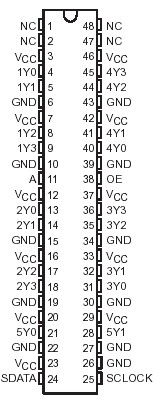CDC318: Features: High-Speed, Low-Skew 1-to-18 Clock Buffer for Synchronous DRAM (SDRAM) Clock Buffering ApplicationsOutput Skew, tsk(o), Less Than 250 psPulse Skew, tsk(p), Less Than 650 ps Supports up to...
floor Price/Ceiling Price
- Part Number:
- CDC318
- Supply Ability:
- 5000
Price Break
- Qty
- 1~5000
- Unit Price
- Negotiable
- Processing time
- 15 Days
SeekIC Buyer Protection PLUS - newly updated for 2013!
- Escrow Protection.
- Guaranteed refunds.
- Secure payments.
- Learn more >>
Month Sales
268 Transactions
Payment Methods
All payment methods are secure and covered by SeekIC Buyer Protection PLUS.

 CDC318 Data Sheet
CDC318 Data Sheet








